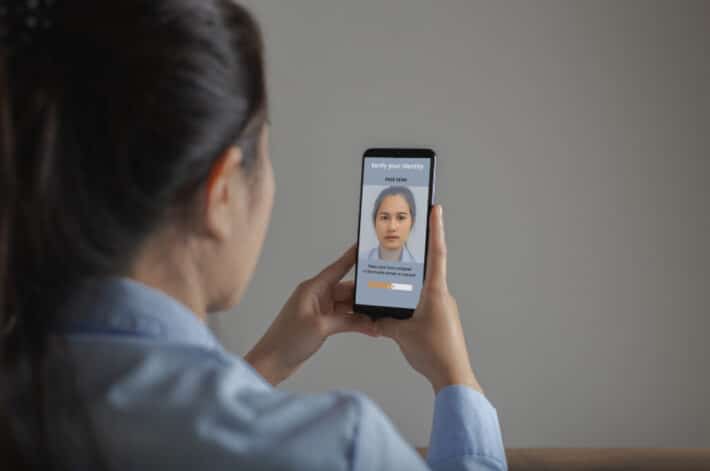5 Revolutionary Ways Biometrics Are Transforming Digital Identity Verification

Biometrics, a cutting-edge technology, is revolutionizing digital identity verification. From facial and voice recognition to fingerprint and iris scanning, biometric identification is reshaping the way we authenticate ourselves online.
This article explores the definition of biometrics, its various types, and how it is used for digital identity verification. Discover the benefits, concerns, and challenges associated with biometric identification, and learn about the five groundbreaking ways biometrics are transforming the future of digital security.
Key Takeaways:
- Biometrics offer enhanced security and increased efficiency in digital identity verification.
- Facial recognition, voice recognition, fingerprint scanning, iris scanning, and behavioral biometrics are revolutionizing identity verification technology.
- Privacy concerns, data breaches, biometric spoofing, and legal and ethical issues are potential challenges that must be addressed by biometric identification systems.
What Are Biometrics?
Biometrics refer to the unique physical or behavioral characteristics of individuals that are used to identify or verify their identity.
There are several types of biometrics used in various applications.
- Fingerprint recognition involves using the distinctive patterns on a person’s fingers to verify their identity.
- Facial recognition technology analyzes facial features such as the distance between eyes or the shape of the face to confirm identity.
- Iris recognition focuses on the unique patterns within the iris of the eye for identification purposes.
- Behavioral biometrics, on the other hand, considers aspects like typing patterns, voice recognition, or even gait analysis to authenticate individuals.
Definition of Biometrics
The definition of biometrics encompasses the use of unique biological traits or behavioral patterns of individuals to establish their digital identity.
By leveraging aspects such as fingerprints, facial recognition, iris scans, and voice recognition, biometric technology plays a pivotal role in modern security systems. Implementing biometrics not only enhances authentication processes but also ensures a higher level of security. Including accuracy in verifying one’s identity. The adoption of biometric authentication methods is steadily replacing traditional methods like passwords and PINs due to their vulnerability to hacking and misuse.
Types of Biometrics
Biometrics can be categorized into physiological biometrics, which include fingerprints and iris recognition, and behavioral biometrics, which involve unique behavioral traits for identity verification.
Physiological biometrics rely on physical characteristics that are intrinsic to an individual’s body, such as fingerprints, iris patterns, facial features, and even DNA. These features are unique to each person and are difficult to forge or replicate.
On the other hand, behavioral biometrics analyze the distinctive patterns in how a person behaves, such as keystroke dynamics, voice recognition, and signature verification. These traits can provide additional layers of security in identity verification processes.
How Are Biometrics Used for Digital Identity Verification?
Biometrics serve as a secure method for digital identity verification, enhancing authentication processes by using unique physical or behavioral characteristics of individuals.
Through the use of biometrics, organizations can ensure enhanced security measures as the technology minimizes the risk of unauthorized access and fraud.
Biometric authentication has revolutionized the way individuals interact with various digital platforms, offering convenience and efficiency in accessing sensitive information.
Technological advancements in biometric scanning devices have greatly improved accuracy and speed, further elevating the user experience during identity verification processes.
Traditional Methods of Identity Verification
Traditional methods of identity verification often rely on passwords, personal information, and security questions to validate a user’s identity, but these methods are prone to fraud and security risks.
One of the major shortcomings of relying solely on passwords is the susceptibility to hacking and weak user credentials. In today’s digital landscape, cybercriminals adept at phishing attacks or social engineering can easily obtain passwords or personal information, bypassing these conventional verification methods. Security questions, often based on easily accessible personal details, can be guessed or even socially engineered, compromising the user’s account security.
Limitations of Traditional Methods
The limitations of traditional identity verification methods include the reliance on static information that can be easily compromised, leading to data breaches and identity theft.
As technological advancements in identity theft continue to evolve, hackers have found more sophisticated ways to circumvent these outdated verification processes.
This poses a significant risk to individuals and businesses, as personal data becomes increasingly vulnerable to exploitation.
Implementing multi-factor authentication and biometric verification offers a more secure approach in verifying identities, adding layers of protection against cyber threats.
Advantages of Biometric Identification
Biometric identification offers enhanced security features, streamlined authentication processes, and a more user-friendly experience compared to traditional identity verification methods.
One of the key benefits of biometric identification is its high level of accuracy, making it extremely difficult for unauthorized individuals to gain access to sensitive information or systems. This technology also eliminates the need for password management, reducing the risk of data breaches and cyber attacks.
In addition, biometric authentication is not only convenient but also fast, providing a hassle-free experience for users. By simply scanning their fingerprint or face, individuals can quickly and securely access their devices, accounts, or physical spaces.
The integration of biometric features into various devices and applications has significantly improved the overall user experience, making interactions more seamless and personalized.
What Are the 5 Revolutionary Ways Biometrics Are Transforming Digital Identity Verification?
Biometrics are revolutionizing digital identity verification through cutting-edge technologies such as facial recognition, voice recognition, fingerprint scanning, iris scanning, and behavioral biometrics.
In the dynamic landscape of digital security, the adoption of biometric authentication methods has ushered in a new era of robust and reliable identity verification protocols. This technology, in particular, has emerged as a game-changer, offering seamless user experiences and enhanced security measures.
- Voice authentication, another innovative biometric solution, adds an extra layer of personalization and security by analyzing individuals’ unique vocal patterns.
- Behavioral biometrics utilize the distinct behavioral traits of users, such as typing speed and mouse movements, to validate identities with a high degree of accuracy.
Facial Recognition Technology
Facial recognition technology enables secure and convenient digital identity verification by analyzing and verifying unique facial features of individuals.
One of the key applications of this innovative technology is in the realm of authentication processes, where it has revolutionized the way users access their devices and online accounts. Digital identity verification tools powered by facial recognition offer a seamless and robust means of confirming the identity of individuals, reducing the reliance on traditional methods like passwords or PINs. This not only enhances user security but also streamlines the overall authentication experience.
Voice Recognition Technology
Voice recognition technology plays a crucial role in digital identity verification, allowing users to authenticate their identities through unique vocal patterns and characteristics.
The integration of voice recognition technology in identity verification processes not only adds an extra layer of security but also enhances the overall user experience. By leveraging biometric authentication, it offers a more convenient and user-friendly way for individuals to access their accounts and sensitive information. Continuous advancements in voice recognition algorithms have significantly improved the accuracy and reliability of this technology. Making it a reliable tool for preventing identity theft and fraud.
Fingerprint Scanning Technology
Fingerprint scanning technology is a widely adopted method for digital identity verification, leveraging unique fingerprint patterns to authenticate individuals securely.
Biometric authentication via fingerprint scanning offers a high level of accuracy due to the distinctiveness of each person’s fingerprints. This precision ensures that only authorized individuals can access sensitive information or secure locations. The security features of fingerprint scanning, such as encryption of biometric data and secure storage mechanisms, add an extra layer of protection against unauthorized access.
From a user perspective, fingerprint scanning is incredibly convenient, eliminating the need to remember complex passwords or carry physical identification documents while ensuring swift and seamless verification processes.
Iris Scanning Technology
Iris scanning technology offers a highly secure and accurate method for digital identity verification by analyzing the unique patterns in an individual’s iris.
These patterns are distinct to each person, making iris scanning one of the most reliable biometric authentication methods available. The level of precision provided by iris recognition technology significantly reduces the chances of unauthorized access. As a result, enhancing overall security measures. Advancements in biometric technology have made iris scanning faster and more user-friendly. Increase integration into various sectors such as banking, healthcare, and border control.
Behavioral Biometrics
Behavioral biometrics revolutionize digital identity verification by analyzing unique behavior patterns such as typing speed, gait, or interaction habits for secure authentication.
By harnessing cutting-edge technology, behavioral biometrics offers a sophisticated layer of security that adapts to how individuals interact with devices. Ensuring a highly accurate user recognition process. This innovative approach not only enhances authentication accuracy but also provides real-time insights into user behavior. Making it difficult for unauthorized users to gain access.
What Are the Benefits of Using Biometrics for Digital Identity Verification?
Using biometrics for digital identity verification offers benefits such as enhanced security, increased efficiency, improved user experience, and cost savings.
One of the key advantages of implementing biometrics for digital identity verification is the heightened security it provides. Biometric data, such as fingerprints or facial recognition, is unique to each individual, making it extremely difficult for unauthorized users to gain access. This significantly reduces the risk of identity theft and fraud.
Biometric authentication streamlines the verification process, enhancing operational efficiency by eliminating the need for passwords or PIN codes. Users can simply use their biometric information to verify their identities, saving time and reducing the potential for errors.
The user-centric nature of biometrics also plays a crucial role in improving the overall experience for individuals. Biometric authentication is intuitive and convenient, requiring users to provide something they inherently possess, like a fingerprint or iris scan, rather than remembering complex passwords.
Enhanced Security
Biometric authentication enhances security measures in digital identity verification by reducing fraud risks and ensuring a more robust authentication process.
With the utilization of unique biological traits such as fingerprints, facial recognition, or iris scans, biometric authentication offers a higher level of security. Also, it is a best practice compared to traditional methods like passwords or PINs. These biometric identifiers are incredibly difficult to replicate, significantly reducing the risk of unauthorized access. By incorporating biometric authentication, organizations can enhance security protocols and protect sensitive data from cyber threats and identity theft. This advanced technology not only prevents fraudulent activities but also ensures a seamless and convenient user experience. Improving overall trust and confidence in digital interactions.
Increased Efficiency
Biometric verification methods improve operational efficiency in digital identity verification processes by streamlining authentication procedures and reducing manual interventions.
Integration of biometric data, such as fingerprints, facial recognition, and iris scanning, enhances security measures. Provide a seamless user experience. With advancements in technology, biometric solutions offer a reliable and accurate means of identity verification. Mitigating the risks associated with traditional authentication methods. Efficiency gains are further realized through real-time verification. Enabling swift and secure access to various services and platforms. The adoption of biometric verification contributes to a more robust and fraud-resistant digital ecosystem. Safeguard sensitive information from potential breaches and unauthorized access.
Improved User Experience
Biometric authentication enhances the user experience in digital identity verification through seamless and convenient authentication methods that prioritize user convenience.
One of the key advantages of using biometric authentication in digital identity verification is the heightened level of security it offers. By utilizing unique biological traits such as fingerprints, facial recognition, or iris scans, biometric authentication ensures a higher level of accuracy. Also, there is protection against identity theft or unauthorized access.
Biometric authentication eliminates the need for users to remember complex passwords or carry physical tokens. Simplifying the authentication process and reducing the burden on users. This not only streamlines the user experience but also enhances the overall security of digital transactions and interactions.
Cost Savings
Biometric solutions offer cost savings in digital identity verification processes by reducing the need for manual interventions. Enhancing operational efficiency and minimizing fraudulent activities.
These advanced technologies streamline the verification process by enabling swift and accurate identification. Cutting down on the time and resources traditionally required for manual checks. By automating identity verification through biometric solutions, organizations can lower operational costs associated with labor-intensive procedures. The robust security measures implemented in biometric systems serve as a strong deterrent to potential fraudsters. Safeguarding sensitive data and preventing unauthorized access.
What Are the Concerns and Challenges of Biometric Identification?
Despite their benefits, biometric identification methods face concerns related to privacy, data breaches, and biometric spoofing. Including legal and ethical implications that need to be addressed.
Privacy risks associated with biometric identification technologies include potential intrusions into personal lives and the collection of sensitive information without consent. Data security issues pose a significant challenge as stolen biometric data cannot be changed like a password. Biometric spoofing vulnerabilities further complicate the reliability of these systems, as malicious actors may impersonate individuals using fake biometric data. The legal and ethical dilemmas surrounding biometric data usage raise questions about data ownership, consent, and potential misuse by governing bodies or corporations.
Privacy Concerns
Biometric technologies raise privacy concerns related to the collection, storage, and misuse of personal data. Also necessitating stringent data protection measures and transparency in data handling practices.
One key aspect to consider is the vulnerability of biometric data to theft or unauthorized access, given its irrevocable nature once compromised. Furthermore, privacy regulations such as GDPR and CCPA play a pivotal role in safeguarding individuals’ biometric information. Outlining strict guidelines for its usage and protection. It is crucial for organizations deploying biometric technologies to uphold these regulations and ensure compliance. Mitigate the potential risks of data breaches.
Data Breaches
Data breaches pose a significant risk to biometric systems. Compromised biometric data can lead to identity theft, fraud, and misuse of sensitive information, necessitating robust security measures.
One of the key implications of data breaches in biometric systems is the erosion of trust in security practices. It ultimately impacts user confidence.
Unauthorized access to biometric data can have far-reaching consequences, from financial losses to reputational damage for organizations handling such data. Ensuring stringent data protection protocols and encryption mechanisms is crucial to minimize the risk of unauthorized access. Implementing multi-factor authentication and regular security audits are essential steps in fortifying biometric system defenses against potential breaches.
Biometric Spoofing
Biometric spoofing techniques pose a threat to the integrity of biometric systems by attempting to deceive authentication processes through fake biometric data or replicas. Also highlighting the need for anti-spoofing measures.
These spoofing methods can lead to severe security vulnerabilities, opening doors for unauthorized access and potential data breaches. To combat these risks, organizations are investing in advanced anti-spoofing technologies. The technologies includes liveness detection, biometric encryption, and machine learning algorithms to enhance system security.
Plus technical solutions, robust fraud prevention mechanisms play a crucial role in safeguarding sensitive biometric data. Regular security audits, multi-factor authentication, and continuous monitoring help in identifying and mitigating spoofing attempts.
Ensuring the integrity of biometric systems is paramount. Any breach could have far-reaching consequences, jeopardizing not only individual privacy but also organizational security and trust.
Legal and Ethical Issues
Legal and ethical considerations surround the use of biometric technologies, requiring compliance with data protection laws. Including ethical data handling practices and transparent consent mechanisms to safeguard user rights and privacy.
Biometric data collection raises concerns about potential misuse, unauthorized access, and profiling. Individuals must be informed about how their data is collected, stored, and shared to maintain trust in the system. The issue of consent becomes crucial in ensuring that users have full control over their biometric information.
Regulatory frameworks play a key role in establishing guidelines for the lawful use of biometric data. Organizations must adhere to these regulations to avoid legal repercussions and protect the interests of individuals. Failure to implement proper data governance practices can lead to breaches of privacy and confidentiality, resulting in severe consequences for both the users and data custodians.
FAQs
Q. What is biometrics and how is it used in digital identity verification?
Ans: Biometrics refers to the measurement and analysis of unique physical or behavioral characteristics of an individual. It is being used in digital identity verification as a way to accurately and securely authenticate a person’s identity, replacing traditional methods such as passwords or PINs.
Q. How do biometrics enhance security in digital identity verification?
Ans: Biometric data, such as fingerprints, facial recognition, and iris scans, are nearly impossible to replicate or fake, making them a highly secure method of authentication. This reduces the risk of identity theft and fraud, making digital identity verification more reliable and secure.
Q. What are some examples of biometric technology being used in digital identity verification?
Ans: Some examples include fingerprint scanners on smartphones, facial recognition software used for airport security, and voice recognition technology for telephone banking authentication. These are just a few of the many ways biometrics are being utilized in digital identity verification.
Q. How do biometrics improve the user experience in digital identity verification?
Ans: Biometric technology eliminates the need for users to remember multiple passwords or PINs, making the verification process quicker and more convenient. It also reduces the likelihood of forgotten passwords or lost access keys, improving the overall user experience.
Q. What are the potential drawbacks of relying solely on biometrics for digital identity verification?
Ans: One potential drawback is the risk of biometric data being compromised or hacked. Unlike passwords, biometric data cannot be changed if it is compromised, leading to potential long-term security risks. There are also concerns about privacy and the collection and storage of biometric data.
Q. How are businesses and governments implementing biometrics for digital identity verification?
Ans: Many businesses and governments are already using biometric technology to verify identities, especially in industries such as finance, healthcare, and border control. In the future, biometrics are expected to become even more prevalent as more advanced and secure methods are developed and implemented.



